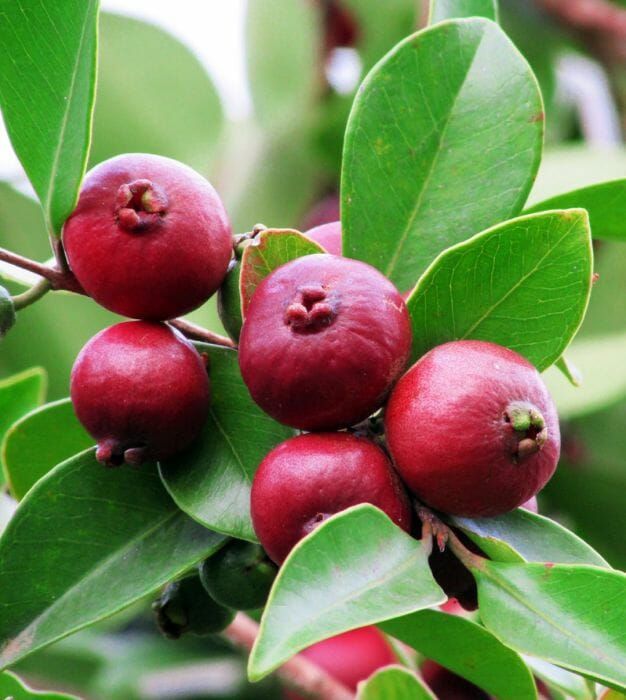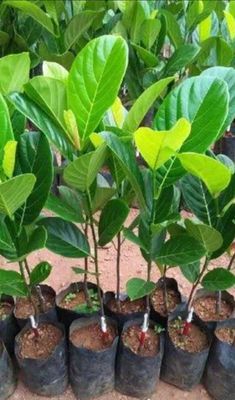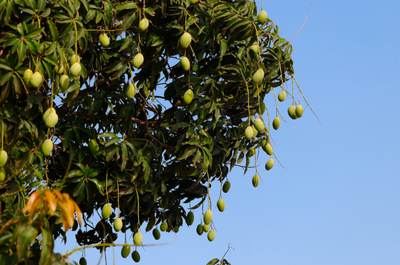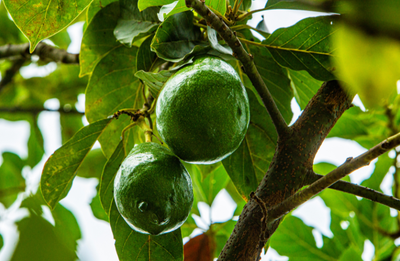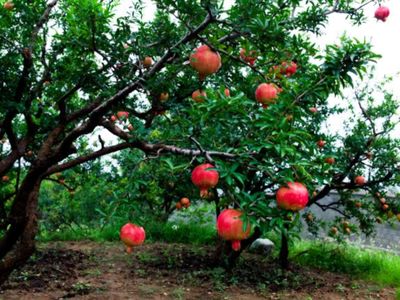🌿 Free Shipping On Orders Over $170! New Customers Use Code:WILDGARDEN For %10 Off 🌿 Afterpay Is Available.
Red Cherry Guava Rooted cutting (Already fruits) - 60-80cm
In stock: 12 available
1
AU$39.99
4 payments of AU$10.00 with
Product Details
Red Cherry Guava (also known as Cherry Guava, Strawberry Guava) Botanical name: Psidium cattleianum (sometimes spelled cattleyanum), var. cattleianum or littorale.
Habit: An evergreen shrub or small tree, typically reaching 2-5 m tall in favourable conditions, though in the wild can grow up to ~6-8 m.
Leaves: Glossy dark green, opposite in arrangement, smooth margins, the upper surface dark and shiny, lower paler.
Flowers: White and “powder-puff” in appearance (many stamens) appearing on new growth, often in late spring/early summer in subtropical regions.
Bark & growth habit: The bark on mature stems can peel, showing mottled layers underneath; new growth may show a reddish bronze tint.
Uses/ornamental value: Because of its bushy habit, attractive fruit and foliage, it can be used as a hedge, screen or container plant in suitable climates.
Fruit Description & Eating Qualities
Shape & size: The fruits are round to slightly oblong, typically 2–4 cm in diameter (about the size of a cherry or slightly larger).
Skin & colour: The skin turns a deep red (or burgundy) when fully ripe.
Flesh & seeds: The pulp is juicy, aromatic, sweet-tangy in flavour, often described as a mix of strawberry + guava. The flesh may be pinkish or pale. There are usually many small edible seeds.
Harvest & ripening: In subtropical climates it may fruit from late summer to autumn; for example one source shows harvest around April–June in certain regions.
Culinary uses: Great eaten fresh off the bush, or used for jams, jellies, juices & desserts due to its aromatic flavour.
Growing Tips & Considerations (for Brisbane/sub-tropical region)
Sun & soil: Prefers full sun for best fruiting, though it will tolerate some light shade. Well-draining soil is preferred.
Size control: With regular pruning you can maintain a compact bush or small tree form (say 2-4 m tall), suitable for gardens or large containers. One supplier notes comfortable height ~2-4 m.
Maintenance: Moderate — once established it is fairly hardy, though in very cool or frost-prone areas protection will help.
Pollination: Self-fertile (you don’t necessarily need a second tree), but good pollinator activity helps.
Potential issues: Important- In some regions (including parts of Queensland/NSW) this species is considered an environmental weed (especially when escaped into bushland) due to its vigour and ability to form dense thickets
Pruning & shaping: Useful to prune after fruiting or in early spring to maintain shape, remove dead wood, open canopy for light and airflow.
Great to grow in QLD
Save this product for later
Red Cherry Guava Rooted cutting (Already fruits) - 60-80cm
You May Also Like
Display prices in:AUD
